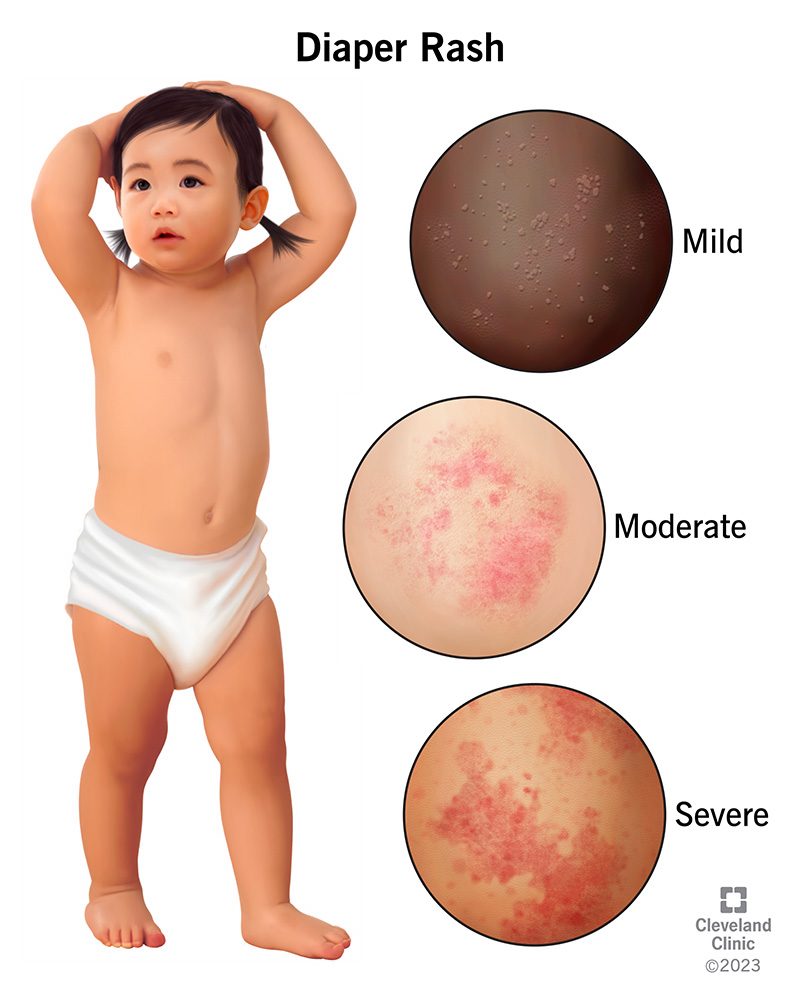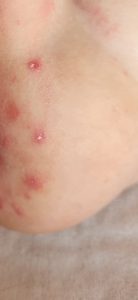Allergic reaction diaper rash occurs when a baby’s skin develops a rash as a result of an allergic reaction. This type of rash is typically caused by an irritant found in diapers, such as fragrances or dyes.
It can also be triggered by food allergies, antibiotics, or other external factors. Identifying the irritant and taking steps to avoid it can help prevent further rashes. Treating an allergic reaction diaper rash usually involves keeping the baby’s skin clean and dry, using gentle, hypoallergenic products, and applying a barrier cream or ointment.
In severe cases, a doctor may prescribe a topical or oral medication. It’s important for parents to seek medical advice if the rash persists or worsens.
Understanding Allergic Reaction Diaper Rash
Diaper rash is a common concern among parents, but not all rashes are created equal. One type of diaper rash is known as an allergic reaction diaper rash. Understanding this specific type of rash can help parents identify and manage it effectively, providing relief to their little ones.
Causes Of Allergic Reaction
Allergic reaction diaper rash is caused by your baby’s skin being sensitive or allergic to certain substances. The most common triggers for this type of rash include:
- Irritants or allergens present in the diaper itself
- Fragrances, dyes, or chemicals in disposable diapers
- Usage of a new brand or type of diaper
- Reaction to baby wipes or lotions
- Sensitivity to laundry detergents
Identifying and avoiding these triggers can help prevent allergic reaction from occurring or recurring.
Symptoms Of Allergic Reaction Diaper Rash
Recognizing the symptoms of an allergic reaction diaper rash is essential for prompt intervention. Look out for the following signs:
- Intense redness and inflammation in the diaper area
- Swelling or bumps on the skin
- Persistent itching or discomfort
- Blisters or sores
- Dry, scaly, or chapped skin
If you notice these symptoms in your baby, it’s important to consult a healthcare professional for proper diagnosis and treatment.
Treatment Options For Allergic Reaction Diaper Rash
When it comes to treating allergic reaction diaper rash, there are several effective treatment options available. Choosing the right treatment is crucial in providing relief and promoting healing for your baby’s delicate skin.
Diaper Rash Creams And Ointments
Diaper rash creams and ointments serve as a primary and essential treatment option for allergic reaction diaper rash. These over-the-counter products, such as zinc oxide-based creams or petroleum jelly, provide protective barrier to prevent further irritation and promote healing. Applying a thick layer of cream or ointment during every diaper change can help soothe irritation and create a barrier from potential irritants.
Prescription Medications
For severe cases of allergic reaction diaper rash, prescription medications may be necessary. Topical corticosteroids can help reduce inflammation and itching, while antifungal creams may be needed if there is a fungal component to the rash. Always consult with a pediatrician before using prescription medications for diaper rash treatment.
Home Remedies
In addition to over-the-counter creams and prescription medications, there are home remedies that can help alleviate allergic reaction diaper rash. Gentle cleansing with mild soap and water, allowing the skin to air dry, and exposing the affected area to natural sunlight can aid in healing. Using unscented baby wipes and avoiding potential allergens in diaper materials can also contribute to relief from diaper rash.
Prevention Tips For Allergic Reaction Diaper Rash
Preventing allergic reaction diaper rashes is essential for your baby’s comfort and well-being. By taking some simple precautions, you can minimize the risk of your little one experiencing discomfort from a diaper rash caused by allergic reactions. Here are some tips to help prevent allergic reaction diaper rash.
Choose The Right Diapers
When selecting diapers for your baby, opt for hypoallergenic and fragrance-free options. Look for diapers made from natural materials such as organic cotton or bamboo to reduce the likelihood of allergic reactions.
Frequent Diaper Changes
Changing diapers frequently is crucial in preventing allergic reaction diaper rash. Wet or soiled diapers can irritate your baby’s skin, leading to rashes. Aim to change your baby’s diaper every 2-3 hours, or immediately after they have soiled it, to keep their skin clean and dry.
Avoid Harsh Chemicals
Avoid using harsh chemical-based wipes, powders, or creams that may trigger allergic reactions. Opt for gentle, unscented wipes and chemical-free diaper creams to soothe and protect your baby’s delicate skin.
Identifying And Avoiding Triggers
Identifying and avoiding triggers is essential in preventing and managing allergic reaction diaper rash in babies. By understanding the common allergens in diapers and testing for allergies, parents can take proactive steps to keep their little ones comfortable and rash-free.
Common Allergens In Diapers
Baby diapers can contain various materials and chemicals that may trigger an allergic reaction in sensitive skin. It’s important to be aware of these common allergens:
- Fragrances: Some diapers use fragrances or perfumes to mask odors, but these can be irritating to sensitive skin.
- Dyes: Brightly colored diapers may contain dyes that can cause allergic reactions or skin irritation.
- Elastic: The elastic used in diapers, particularly around the waist and leg areas, may contain latex or other materials that some babies are allergic to.
- Adhesives: Diapers often use adhesives to keep them securely in place, but these adhesives can sometimes cause skin irritation or allergic reactions.
- Chemicals: Certain chemicals, such as those used in the absorbent core of a diaper, can trigger allergic reactions in sensitive skin.
Testing For Allergies
If you suspect your baby may be experiencing an allergic reaction diaper rash, it’s important to consult with a healthcare professional. They can guide you on the appropriate testing methods to identify the specific allergens causing the rash. Some common approaches to testing for allergies include:
- Patch testing: Small amounts of potential allergens are applied to the skin and covered with patches. These patches are left on for a specific period to determine if an allergic reaction occurs.
- Skin prick test: Tiny amounts of potential allergens are pricked into the skin to evaluate the body’s reaction.
- Blood test: Blood samples are taken and analyzed for specific antibodies that indicate an allergic response to certain substances.
Once the specific allergens are identified, it’s important to take steps to avoid them. This may involve switching to hypoallergenic diapers, fragrance-free options, or diapers made from natural materials. Additionally, regular diaper changes, gentle cleansing, and using barrier creams can help prevent and manage allergic reaction diaper rash.
Expert Advice And Professional Consultation, Consulting A Pediatrician
If your child experiences a persistent diaper rash, consult a pediatrician promptly.
Seeking Dermatologist’s Advice
In severe cases, dermatologist consultation may be necessary for proper treatment.
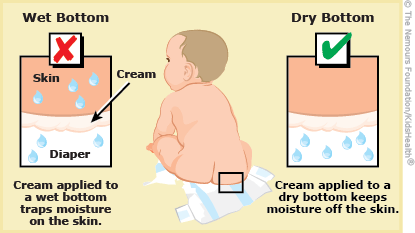
Managing Severe Cases
When dealing with severe cases of allergic reaction diaper rash, prompt and appropriate action is crucial. Severe cases can cause discomfort and distress to the baby, requiring extra attention and care. Below are essential steps to effectively manage severe cases of diaper rash:
When To Seek Medical Help
- Consult a pediatrician promptly if the rash does not improve after a few days of home treatment.
- If the rash spreads rapidly or appears to be worsening, seek immediate medical attention.
- Any signs of infection such as pus, fever, or increased pain require a visit to the doctor.
Dealing With Persistent Allergic Reactions
- Ensure the diaper area is kept clean and dry at all times to prevent further irritation.
- Switch to hypoallergenic diapers and wipes to avoid triggering allergic reactions.
- Use gentle, fragrance-free skin care products to moisturize the baby’s skin and aid in healing.
Alternative Remedies And Natural Treatments
Allergic reaction diaper rash can be a frustrating and uncomfortable condition for both babies and parents. While there are several conventional treatments available, many people prefer to explore alternative remedies and natural treatments due to their gentle nature and minimal side effects. In this section, we will take a look at some effective options for dealing with allergic reaction diaper rash using natural oils and herbal remedies.
Use Of Natural Oils
Natural oils are an excellent choice for treating allergic reaction diaper rash as they provide deep moisturization and nourishment to the irritated skin. Some effective natural oils for treating diaper rash include:
- Coconut Oil: This versatile oil has anti-inflammatory and antimicrobial properties, which can help soothe the rash and prevent infection. Simply apply a thin layer of coconut oil to the affected area after each diaper change.
- Olive Oil: Olive oil is known for its moisturizing properties and can help relieve the discomfort caused by allergic reaction diaper rash. Gently massage a small amount of olive oil onto the affected area to provide relief.
- Calendula Oil: Calendula oil has soothing and healing properties, making it an excellent choice for treating diaper rash. You can apply a few drops of calendula oil onto the rash and gently massage it in for relief.
Herbal Remedies
In addition to natural oils, certain herbal remedies can be beneficial in treating allergic reaction diaper rash. Some herbal remedies that have been found to be effective include:
- Chamomile: Chamomile has anti-inflammatory properties and can help relieve the redness and inflammation associated with diaper rash. Infuse chamomile flowers in warm water and use it to gently wash the affected area.
- Witch Hazel: Witch hazel has astringent properties that can help soothe irritated skin and reduce inflammation. Dilute witch hazel with water and apply it to the rash using a soft cloth or cotton pad.
- Plantain: Plantain leaves contain natural compounds that can help soothe diaper rash and promote healing. Crush fresh plantain leaves to release the juices and apply the paste to the affected area.
When using alternative remedies and natural treatments for allergic reaction diaper rash, it is important to remember that every baby is different, and what works for one may not work for another. It is always advisable to consult a healthcare professional before trying any new remedies, especially if the rash persists or worsens.
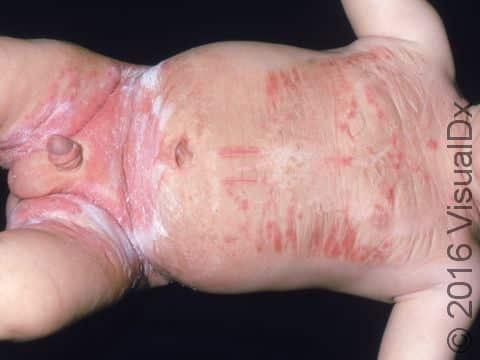
Conclusion And Long-term Care
After exploring the causes, symptoms, and treatments for allergic reaction diaper rash, it is important to emphasize the significance of long-term care and prevention strategies. Consistent care and monitoring are crucial to managing and preventing future occurrences of diaper rash. By recognizing the importance of ongoing care, parents and caregivers can effectively safeguard their child’s skin and promote healthy growth and development.
Importance Of Consistent Care
Consistent care is pivotal in managing allergic reaction diaper rash. This includes changing diapers frequently, using hypoallergenic wipes, and applying barrier creams to protect the skin. Establishing a routine for diaper changes and skincare can aid in preventing the recurrence of diaper rash and promoting overall skin health.
Monitoring And Prevention Strategies
Monitoring your baby’s skin for any signs of irritation or redness is imperative. If the rash persists or worsens, seeking medical advice is essential. Additionally, implementing prevention strategies, such as using breathable diapers, avoiding known allergens, and maintaining proper hygiene, can significantly reduce the risk of diaper rash.
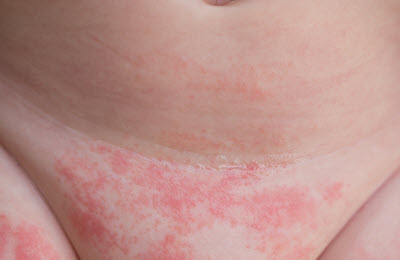
What Does Allergy Diaper Rash Look Like?
Allergy diaper rash appears as red, inflamed skin with bumps or blisters, often causing itchiness.
How Can You Tell If A Diaper Rash Is Serious?
Signs of a serious diaper rash include bleeding, oozing, fever, or spreading beyond the diaper area.
What Can You Do For An Allergic Reaction To Diapers?
To address an allergic reaction to diapers, switch brands, use ointments, keep the area clean, and consider cloth options. Seek medical advice if the reaction persists.
Can Diaper Rash Be Caused By Food Allergy?
Yes, diaper rash can be caused by a food allergy.
Conclusion
Identifying and addressing allergic reaction is crucial for the comfort and well-being of infants. Prompt diagnosis and appropriate treatment can help alleviate symptoms and prevent further complications. By following proper hygiene practices and using hypoallergenic products, parents can mitigate the chances of their baby developing an allergic reaction diaper rash.
It is always advisable to consult a healthcare professional for a comprehensive evaluation and guidance tailored to your child’s specific needs.

